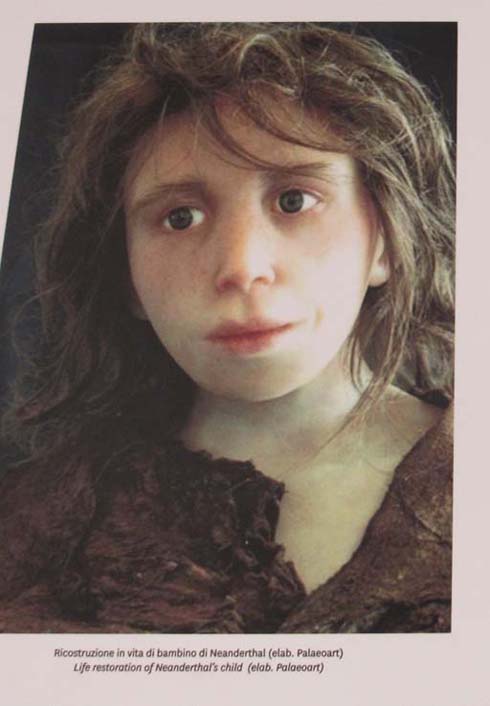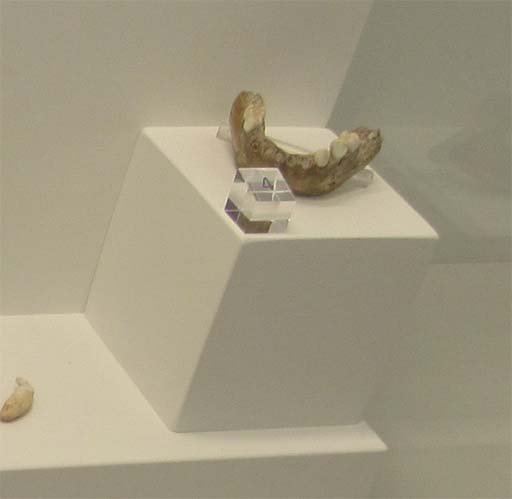This is a photo of a reconstruction of a Neanderthal boy. Hair and eye color were derived from DNA found in the boy’s jaw. You can’t tell from the photo, but the jaw is quite small.
The exhibit didn’t tell me how old the boy was when he died, or if any of his other bones were recovered, or how old the bones are, other than that they were found in “sabbie a ghiaie di alluvioni.”
The first thing that struck me about the face is its humanity. We are both homo sapiens, and our kinship is readily apparent. What I see is not a primitive shambling half-man, but a distant cousin who died young, and what I felt was not superiority, but pathos.
Found in the Museo Nazionale della Magna Grecia in Reggio Calabria.


Um. Technically, he’s Homo neanderthalensis, rather than Homo sapiens. The rest of your points are well taken.
Actually he’s H. sapiens neanderthalensis, or so I learned in college.
Whatever the dueling taxonomists call them doesn’t really matter. They were a subbranch of us. With proper clothing, haircuts, etc., I reckon a Neanderthal wouldn’t get a second glance walking down a city street.
I would certainly put more weight in your college education than in Wikipedia, so I cede the point to you. 🙂
-JRS
The more we study these things, the more we find that our historic preconceptions – which, at least in the Eurocentric world, seem to be comparatively recent inventions, if David Graeber & his sources are correct – are just flat-out wrong. It stands to reason that beings that have brains pretty much just like ours in terms of complexity would develop much richer societies than later cultures with a need to “prove” their superiority would give them credit for. And, as some evidence suggests, much more equitable societies as well.
Comments on this entry are closed.